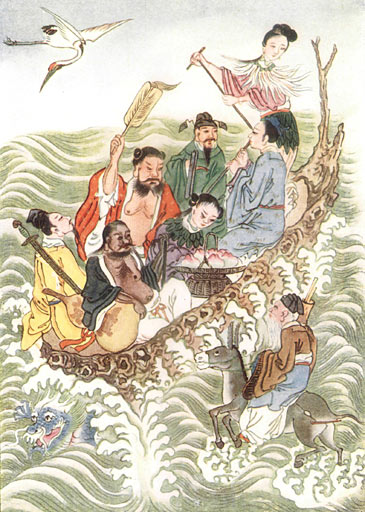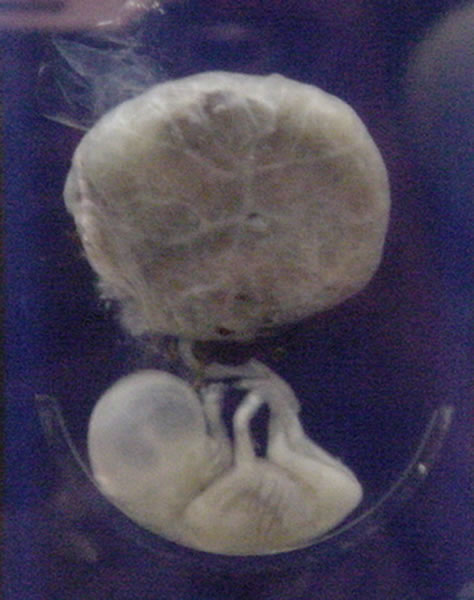|
Neijing Tu
The Neijing Tu () is a Daoist "inner landscape" diagram of the human body illustrating ''Neidan'' , Wu Xing, Yin and Yang, and Chinese mythology. Title The name ''Neijing tu'' combines ''nei'' 內 "inside; inner; internal", ''jing'' 經 "warp (vs. woof); scripture, canon, classic; (TCM) meridian; channel", and ''tu'' 圖 "picture; drawing; chart; map; plan". This title, comparable with ''Huangdi Neijing'' 黃帝內經 "Yellow Emperor's Inner Canon", is generally interpreted as a "chart" or "diagram" of "inner" "meridians" or "channels" for circulating '' qi'' in ''neidan'' practices. English translations of ''Neijing tu'' include: *"Diagram of the Internal Texture of Man" (Needham 1983:114) *"Diagram of the Inner Scripture" (Ching 1997:188) *"Chart of Inner Passageways" (Despeux and Kohn 2003:184) *"Diagram of Internal Pathways" (Komjathy 2004:40) *"Chart of the Inner Warp" or "Chart of the Inner Landscape" (Despeux 2008:767) ''Neijing tu'' 內經圖 has an alternate writing of ... [...More Info...] [...Related Items...] OR: [Wikipedia] [Google] [Baidu] |
Qing Dynasty
The Qing dynasty ( ), officially the Great Qing,, was a Manchu-led imperial dynasty of China and the last orthodox dynasty in Chinese history. It emerged from the Later Jin dynasty founded by the Jianzhou Jurchens, a Tungusic-speaking ethnic group who unified other Jurchen tribes to form a new "Manchu" ethnic identity. The dynasty was officially proclaimed in 1636 in Manchuria (modern-day Northeast China and Outer Manchuria). It seized control of Beijing in 1644, then later expanded its rule over the whole of China proper and Taiwan, and finally expanded into Inner Asia. The dynasty lasted until 1912 when it was overthrown in the Xinhai Revolution. In orthodox Chinese historiography, the Qing dynasty was preceded by the Ming dynasty and succeeded by the Republic of China. The multiethnic Qing dynasty lasted for almost three centuries and assembled the territorial base for modern China. It was the largest imperial dynasty in the history of China and in 1790 ... [...More Info...] [...Related Items...] OR: [Wikipedia] [Google] [Baidu] |
Laozi
Laozi (), also known by numerous other names, was a semilegendary ancient Chinese Taoist philosopher. Laozi ( zh, ) is a Chinese honorific, generally translated as "the Old Master". Traditional accounts say he was born as in the state of Chu in the 6th centuryBC during China's Spring and Autumn Period, served as the royal archivist for the Zhou court at Wangcheng (modern Luoyang), met and impressed Confucius on one occasion, and composed the ''Tao Te Ching'' before retiring into the western wilderness. Chinese folk religion considers he then became an immortal hermit or a god of the celestial bureaucracy under the name Laojun, one of the Three Pure Ones. A central figure in Chinese culture, Laozi is generally considered the founder of philosophical and religious Taoism. He was claimed and revered as the ancestor of the 7th10th century Tang dynasty and similarly honored by modern Chinese with the surname Li. His work had a profound influence on subsequent Chinese re ... [...More Info...] [...Related Items...] OR: [Wikipedia] [Google] [Baidu] |
Dantian
Dantian, dan t'ian, dan tien or tan t'ien is loosely translated as "elixir field", "sea of qi", or simply "energy center". Dantian are the "qi focus flow centers", important focal points for meditative and exercise techniques such as qigong, martial arts such as t'ai chi ch'uan, and in traditional Chinese medicine. Overview Historically the first detailed description of the lower Dantian is in the '' Laozi zhongjing'' 老子中經 from the 3rd century CE, which refers to the elixir-of-life field where "essence" and "spirit" are stored; it is related to regeneration and sexual energy, menstruation and semen.Laozi zhongjing (Central Scripture of Laozi), sec. 17. Translation published in Fabrizio Pregadio, "Early Daoist Meditation and the Origins of Inner Alchemy," in Benjamin Penny, ed., Daoism in History: Essays in Honour of Liu Ts'un-yan, 139–40 (London: Routledge, 2006). http://www.goldenelixir.com/taoism/texts_laozi_zhongjing.html Traditionally, a dantian is considered to b ... [...More Info...] [...Related Items...] OR: [Wikipedia] [Google] [Baidu] |
Kunlun Mountain (mythology)
The Kunlun () or Kunlun Shan is a mountain or mountain range in Chinese mythology, an important symbol representing the ''axis mundi'' and divinity. The mythological Kunlun is based on various sources — mythologic and geographic — of the modern so-called Kunlun Mountains of the Tibetan Plateau and Mount Kailash (as an archetypal ''omphalos''). The term "Kunlun" has also been applied to Southeastern Asian lands or islands and seemingly even Africa — although the relationship to the mountain is not clear beyond the nomenclature. In any case, Kunlun refers to distant, exotic, and mysterious places. Different locations of Kunlun have been ascribed in the various legends, myths, and semi-historical accounts in which it appears. These accounts typically describe Kunlun as the dwelling place of various gods and goddesses where fabled plants and mythical creatures may also be found. Many important events in Chinese mythology were based around Kunlun. Historical development As the my ... [...More Info...] [...Related Items...] OR: [Wikipedia] [Google] [Baidu] |
Eight Immortals
The Eight Immortals () are a group of legendary '' xian'' ("immortals") in Chinese mythology. Each immortal's power can be transferred to a vessel () that can bestow life or destroy evil. Together, these eight vessels are called the "Covert Eight Immortals" (). Most of them are said to have been born in the Tang or Song Dynasty. They are revered by the Taoists and are also a popular element in secular Chinese culture. They are said to live on a group of five islands in the Bohai Sea, which includes Mount Penglai. The Immortals are: * He Xiangu (), in modern context generally seen as the only female of the group, often depicted holding a lotus flower. * Cao Guojiu (), related to a Song dynasty emperor before he became an immortal. * Li Tieguai (), considered to be mentally disturbed and associated with medicine and easing the suffering of the sick and needy, identified by his iron crutch and Calabash bottle. * Lan Caihe (), originally pictured as female later developed an ambi ... [...More Info...] [...Related Items...] OR: [Wikipedia] [Google] [Baidu] |
Lü Dongbin
Lü Dongbin (796 CE – 1016 CE) is a legendary Chinese scholar and poet said to have lived during the Tang Dynasty. Whether he actually lived the two hundred and twenty years cannot be determined. Elevated to the status of an immortal in the Chinese cultural sphere by Daoists, he is one of the most widely known of the group of deities known as the Eight Immortals. Lü is also a historical figure and mentioned in the official history book ''History of Song''. He is widely considered to be one of the earliest masters of neidan, or internal alchemy. He is also depicted in art dressed as a scholar carrying a sword to dispel evil spirits. Character Lü Dongbin is usually portrayed as a scholarly, clever man with a genuine desire to help people obtain wisdom/enlightenment and to learn the Tao. However, he is often portrayed as having some character "flaws," not an uncommon theme for the colorful Taoist immortals, all of whom in general have various eccentricities: *He is portraye ... [...More Info...] [...Related Items...] OR: [Wikipedia] [Google] [Baidu] |
Zangfu
The zàng-fǔ () organs are functional entities stipulated by traditional Chinese medicine (TCM). They constitute the centrepiece of TCM's general concept of how the human body works. The term ''zàng'' () refers to the organs considered to be yin in nature – Heart, Liver, Spleen, Lung, Kidney – while ''fǔ'' () refers to the yang organs – Small Intestine, Large Intestine, Gall Bladder, Urinary Bladder, Stomach and Sānjiaō. Each zàng is paired with a fǔ, and each pair is assigned to one of the Wǔ Xíng. The zàng-fǔ are also connected to the twelve standard meridians – each yang meridian is attached to a fǔ organ and each yin meridian is attached to a zàng. They are five systems of Heart, Liver, Spleen, Lung, Kidney. To highlight the fact that the zàng-fǔ are not equivalent to the anatomical organs, their names are often capitalized. Anatomical organs To understand the zàng-fǔ it is important to realize that their concept did not primarily develop out of ... [...More Info...] [...Related Items...] OR: [Wikipedia] [Google] [Baidu] |
Joseph Needham
Noel Joseph Terence Montgomery Needham (; 9 December 1900 – 24 March 1995) was a British biochemist, historian of science and sinologist known for his scientific research and writing on the history of Chinese science and technology, initiating publication of the multivolume '' Science and Civilisation in China''. He was elected a fellow of the Royal Society in 1941 and a fellow of the British Academy in 1971. In 1992, Queen Elizabeth II conferred on him the Companionship of Honour, and the Royal Society noted he was the only living person to hold these three titles. Early life Needham's father, Joseph was a doctor, and his mother, Alicia Adelaïde, née Montgomery (1863–1945), was a music composer from Oldcastle, County Meath, Ireland. His father, born in East London, then a poor section of town, rose to became a Harley Street physician, but frequently battled with Needham's mother. The young Needham often mediated. In his early teens, he was taken to hear the Su ... [...More Info...] [...Related Items...] OR: [Wikipedia] [Google] [Baidu] |
Fetus
A fetus or foetus (; plural fetuses, feti, foetuses, or foeti) is the unborn offspring that develops from an animal embryo. Following embryonic development the fetal stage of development takes place. In human prenatal development, fetal development begins from the ninth week after fertilization (or eleventh week gestational age) and continues until birth. Prenatal development is a continuum, with no clear defining feature distinguishing an embryo from a fetus. However, a fetus is characterized by the presence of all the major body organs, though they will not yet be fully developed and functional and some not yet situated in their final anatomical location. Etymology The word '' fetus'' (plural '' fetuses'' or '' feti'') is related to the Latin '' fētus'' ("offspring", "bringing forth", "hatching of young") and the Greek "φυτώ" to plant. The word "fetus" was used by Ovid in Metamorphoses, book 1, line 104. The predominant British, Irish, and Commonwealth spelling ... [...More Info...] [...Related Items...] OR: [Wikipedia] [Google] [Baidu] |
Floruit
''Floruit'' (; abbreviated fl. or occasionally flor.; from Latin for "they flourished") denotes a date or period during which a person was known to have been alive or active. In English, the unabbreviated word may also be used as a noun indicating the time when someone flourished. Etymology and use la, flōruit is the third-person singular perfect active indicative of the Latin verb ', ' "to bloom, flower, or flourish", from the noun ', ', "flower". Broadly, the term is employed in reference to the peak of activity for a person or movement. More specifically, it often is used in genealogy and historical writing when a person's birth or death dates are unknown, but some other evidence exists that indicates when they were alive. For example, if there are wills attested by John Jones in 1204, and 1229, and a record of his marriage in 1197, a record concerning him might be written as "John Jones (fl. 1197–1229)". The term is often used in art history when dating the care ... [...More Info...] [...Related Items...] OR: [Wikipedia] [Google] [Baidu] |
.jpg)



